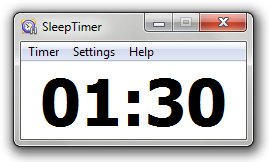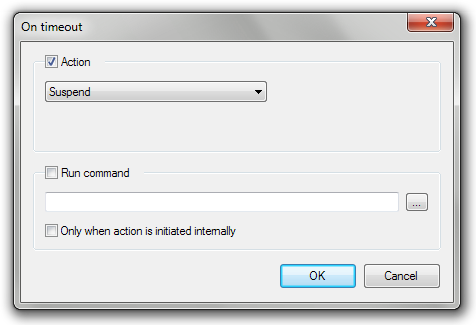SleepTimer Help
Installation
The setup file creates a single entry in the Start Menu. Hit the Windows key, type sleeptimer and press Enter to launch it. The program can be uninstalled from the Programs and Features applet in the Control Panel.
The portable version needs no installation; just download and extract in any folder. Settings are stored in an INI file in the same folder.
Interface

The main window shows the timer display (hours and minutes). It can be changed in several ways:
- With the +/- keys.
- Via the Timer menu.
- By right-clicking the display and scrolling the mouse wheel.
The timer starts immediately when changed. The display remains highlighted for a couple of seconds, to allow for further changes and then reverts to its normal color. To turn it off, set it to zero. When off, the display will show --:--.
Hint: You can press Ctrl+F8 to activate a short, 10 second timer (the seconds display will be automatically enabled). This is useful if you want to test the timeout configuration. You can still deactivate this timer by setting it to zero.
Settings menu
- Colors
- Change the display colors or reset them to defaults.
- Font
- Set the display font.
- Set step
- Change the number of minutes used to increment/decrement the timer.
- Show seconds
- Include seconds in the display.
- On timeout
- Configure the actions to perform when the timer expires. See Timeout dialog below.
Timeout dialog

- Action
- Check to perform a system action. Available actions are: Suspend (default), Hibernate, or Shutdown. If the selected action is not available, a message will be displayed below.
- Run command
- Check to run an external command. Enter the path in the edit box below or use the
...button to browse. - Only when action is initiated internally
- Use to suppress monitoring of external events. If unchecked (default), SleepTimer will run the specified command even if the system is suspended/shutdown before the timer runs down (note: the timer has to be running for this to work).